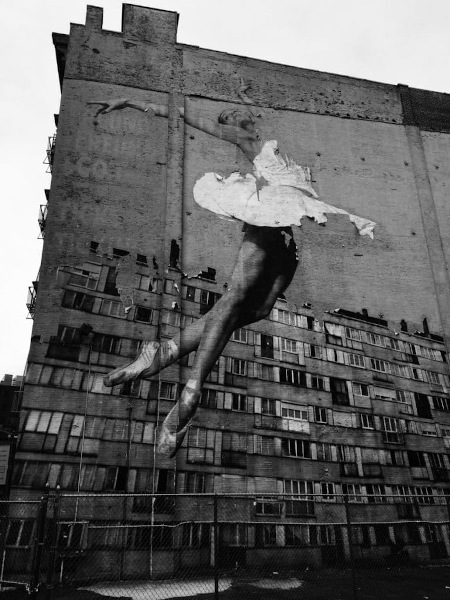Colleen Hooper: Yeah, in my article, I talk about a number of performers who performed at the Arthur Kill Correctional Institution on Staten Island. Basically, certain performances seemed really well received and exciting, according to both the dancers and the prison newsletter, which I was able to view in the archives. They talked about how wonderful the Rachel Lampert and Dancers Company was and how much they related to it. Then they brought another dance group in a few months later and the reaction was more mixed. It was such an interesting practice because I was able to speak to a number of people who performed in the prison and get their perspectives. I was not able to speak to any of the audience members who watched, but I was able to piece together a sense of what could be known and what could be unknown in terms of a public performance in that type of setting. The thing that was fascinating to me was, 40 years after this performance took place, several of the dancers I spoke to brought it up as something that really impacted them because it was so different than what they were accustomed to in a western theatrical stage presentation. They received so much feedback from the audience. A tap dancing group, which was comprised of Jane Goldberg and Charles "Cookie" Cook, was really well received.
Whereas, a dance that was performed by Mitchell Rose and Martha Bowers had a more mixed reception, we'll say. That was like a moment for Martha. They were performing something that was kind of dry, tongue-in-cheek humor between a man and a woman, and at one point, she does a somersault in the dance and her underwear was exposed. It was dance underwear, so it was supposed to happen. It wasn't a mistake. But the audience just reacted so much. And so, she thought, "What am I doing? This is not a dance to be doing in a men's prison. They're just seeing me as a woman who just exposed my underwear." She realized there was a huge disconnect between being in a men's prison and something that, on a New York City stage in the theater district, would be seen as cheeky humor. There was really a huge gap between those two spaces. That was something that she really considered and it influenced the direction in which she took her career. She's been involved in many different programs in Red Hook, Brooklyn over the past decades. First with dance theater, now she works with youth in the community in a lot of other ways. It really was a career changing moment for her because I think she realized that a dance does not have any meaning that is not tied to a broader sense of place and audience.
Maxximilian Seijo: That's so fascinating. As we're discussing this, I can't help but think what's so interesting about the ways you're posing these questions and how we're pondering the question of public funding and public value is that the question is never, "Can we afford to employ artists?" It's about what we want to get done with the employment that we can always already afford. I think the way you're framing that and how we're discussing it is so useful to actually get to the core of the question of public arts and how we should be appropriating money to public betterment.
Colleen Hooper: Right. I think that's a great point because we're also sitting here in a moment where, in the past two budget years, our current president Donald Trump proposed to completely eliminate the National Endowment for the Arts and the National Endowment for the Humanities.
Colleen Hooper is assistant professor of Dance at Point Park University. Colleen researches the history of public funding for arts programs in the United States from the New Deal through the post War era. Referenced in the episode is her 2017 article in the
Dance Research Journal, titled "
Ballerinas on the Dole: Dance and the Comprehensive Employment Training Act (CETA), 1974-1982."
[photo by John Tyson]



